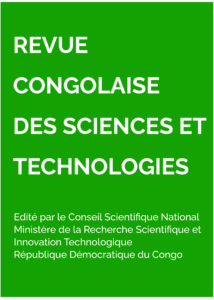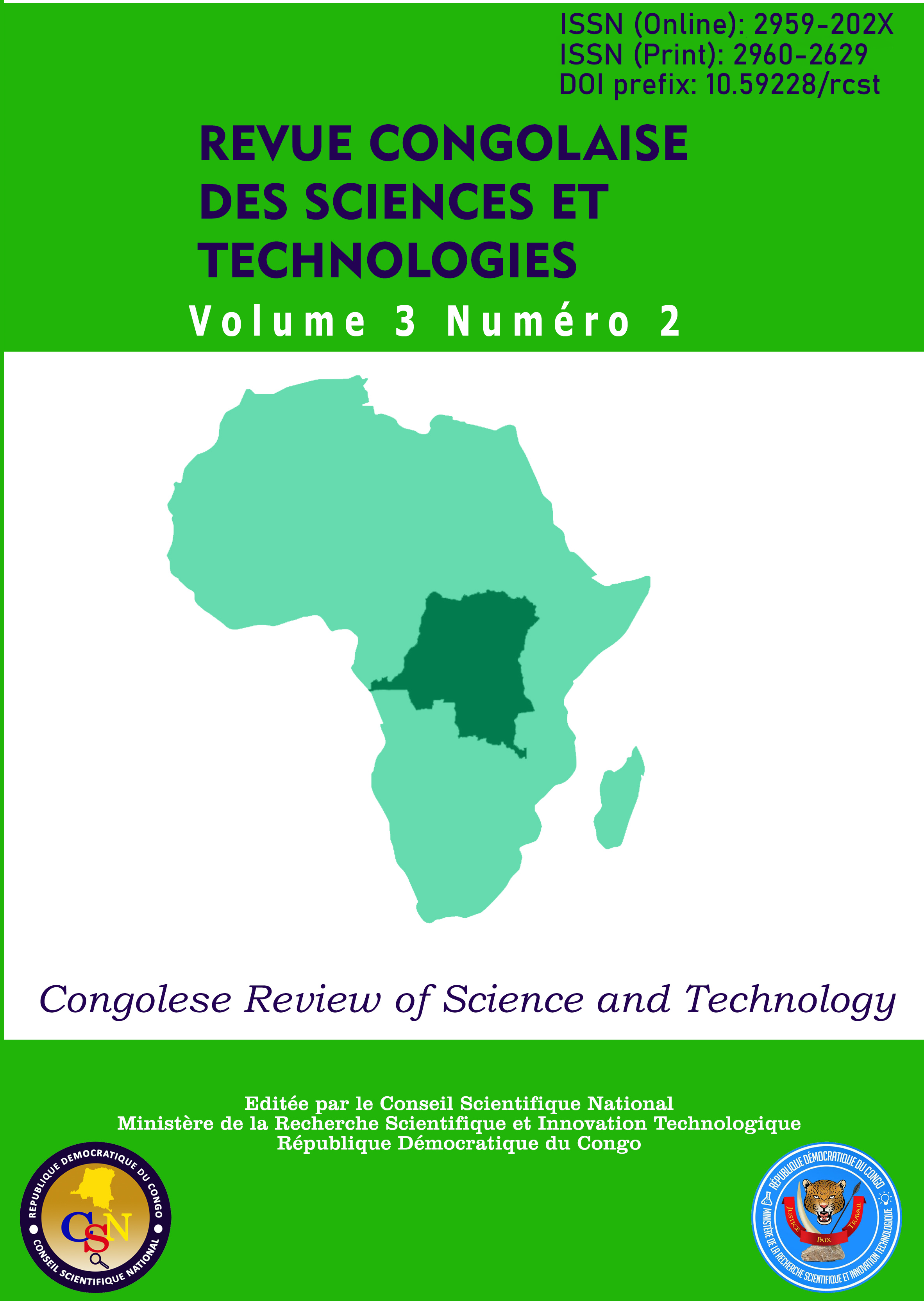The Kinshasa girl and the chore of water in the Mikala I and II districts in the N’sele Area, DRC
Main Article Content
Abstract
In the Democratic Republic of Congo, despite the sufficient availability of fresh water, distribution by the competent service
remains a puzzle for the population in peripheral and rural areas. The rate of access to drinking water is very low, or even
nonexistent, as is the case for the population of Mikala I and II neighborhoods. In the absence of hydraulic networks for the
distribution of drinking water, women and girls are forced to walk long hours daily in search of water. To conduct this study
on the Kinshasa girl and the water chore, a cross-sectional survey by questionnaire was carried out on 200 school-aged girls in
the Mikala I and II neighborhoods. The selection of respondents was done randomly. The results obtained are as follows: 48%
of the respondents arrive late to school, 46% are absent, and 77% had to drop out of school. It is also noteworthy that the
collection of water exposes girls to physical, moral, and sexual violence, as well as health problems. Consequently, even with
the free basic education promoted by the Congolese government, young girls from Mikala I and II neighborhoods will have
difficulty benefiting from it. A large number of girls drop out of school because of the water chore, which represents a loss for
the nation, as it is said that to educate a woman is to educate a nation.
Article Details

This work is licensed under a Creative Commons Attribution-NonCommercial-ShareAlike 4.0 International License.
References
AITEC. (1994). L'eau et l'assainissement dans les
villes du monde. . Consulté le 15/01/ 2024.
http://www.globenet.org/aitec/chantiers/enviro
nnement/eauassinissement
Bétio, S., Guéladio, C., Brama, K., Zurbrügg, C. &
Issiaka, S. (2012). Equité d’accès à l’eau
potable dans un contexte de diversité de modes
d’approvisionnement: Cas de la Ville de
Bouaké (Côte D’ivoire). European Journal of
Scientific Research, 72(2), 298-310.
http://www.europeanjournalofscientificresearc
h.com
Crow, B. & McPike, J. (2009). How the drudgery of
getting water shapes women’s lives in lowincome urban communities. Gender,
technology and development, 13(1), 43-68.
Diagne, A. (2010). Interactions entre l’accès à l’eau
potable et les autres objectifs du millénaire
pour le développement une analyse à partir de
données sur les banlieues de Dakar, Série de
documents de recherche, 1-22. www.cressenegal.org
Dos santos, S. & Pambe, M.W (2014). Le fardeau de
la corvée d’eau : différenciation de genre et
potentiel frein à l’émancipation féminine en
milieu urbain informel. Ouagadougou, Presses
Universitaires.
FAO. (2014). Le rôle des femmes dans la gestion des
ressources en eau en général et de l’eau
agricole en particulier. Rapport AQUASTAT,
www.fao.org/nr/aquastat
Gore-Dale, E. (2006). Les femmes et l’eau, en
Afrique, Responsabilité & environnement,
(42) 78-92
www.scirp.org
Ogoubiyi, C., Tobada, A.B. & Amouzouvi, D. (2018).
Corvée d’eau de la femme de pobe et
implications socioéconomiques de sa
réduction. Acaref, 84-98.
www.acaref.netLacoste, Y. (2008). L’eau dans le monde, les batailles
pour la vie. Petit Encyclopedie LAROUSSE.
UNICEF. (2018). Incidences sociales de la corvée de
l’eau en milieu rural chez les filles de la
province du Kongo Central-RDC. Programme
national école et village assainis. Rapport
www.unicef.org
UNICEF. (2022). Le Défi de l’Eau 2022. Dossier
pédagogique
www.myunicef.fr
PS-Eau. (2023). Les enjeux de l’eau et
l’assainissement, Fiche pays République
Démocratique du Congo. Consulte le
/01/2024
www.pseau.org/outils/actions
Tobbi, J. (2018). Accès à l’eau potable et impact sur
la santé d’une communauté, l’éducation et la
ressource eau : analyse à partir d’un projet au
Togo, [Mémoire de Licence, Institut
d’Aménagement, de Tourisme et d'Urbanisme].

